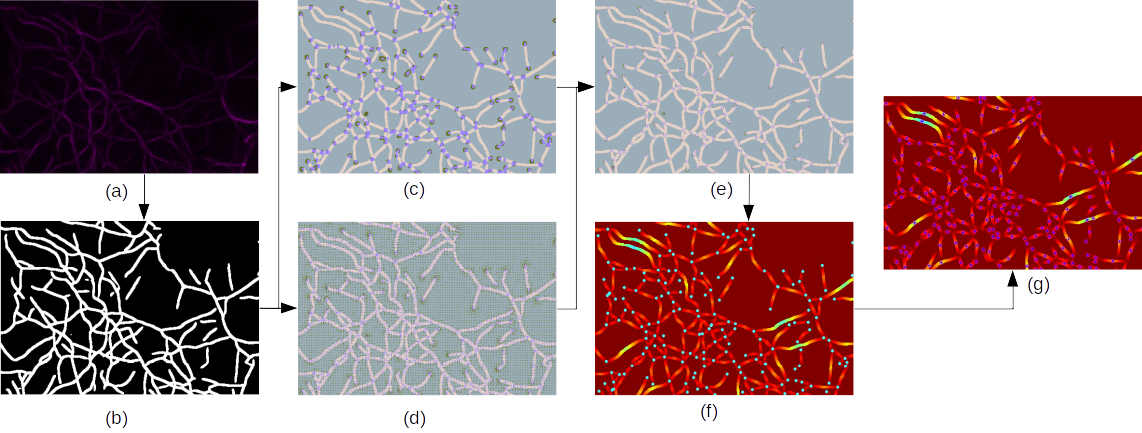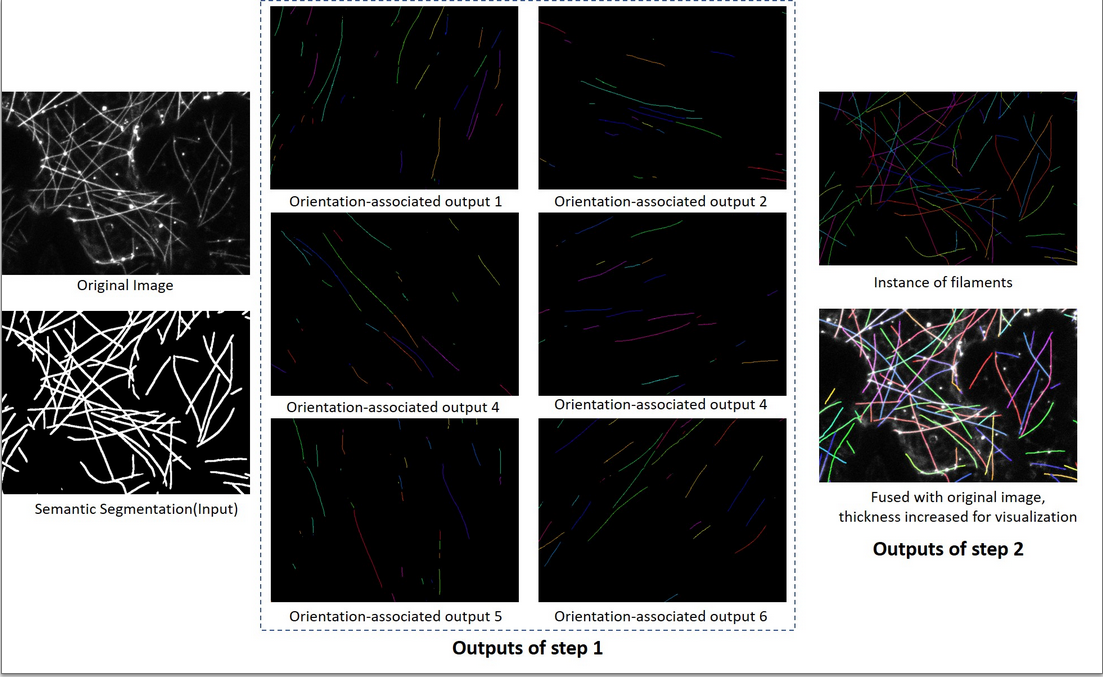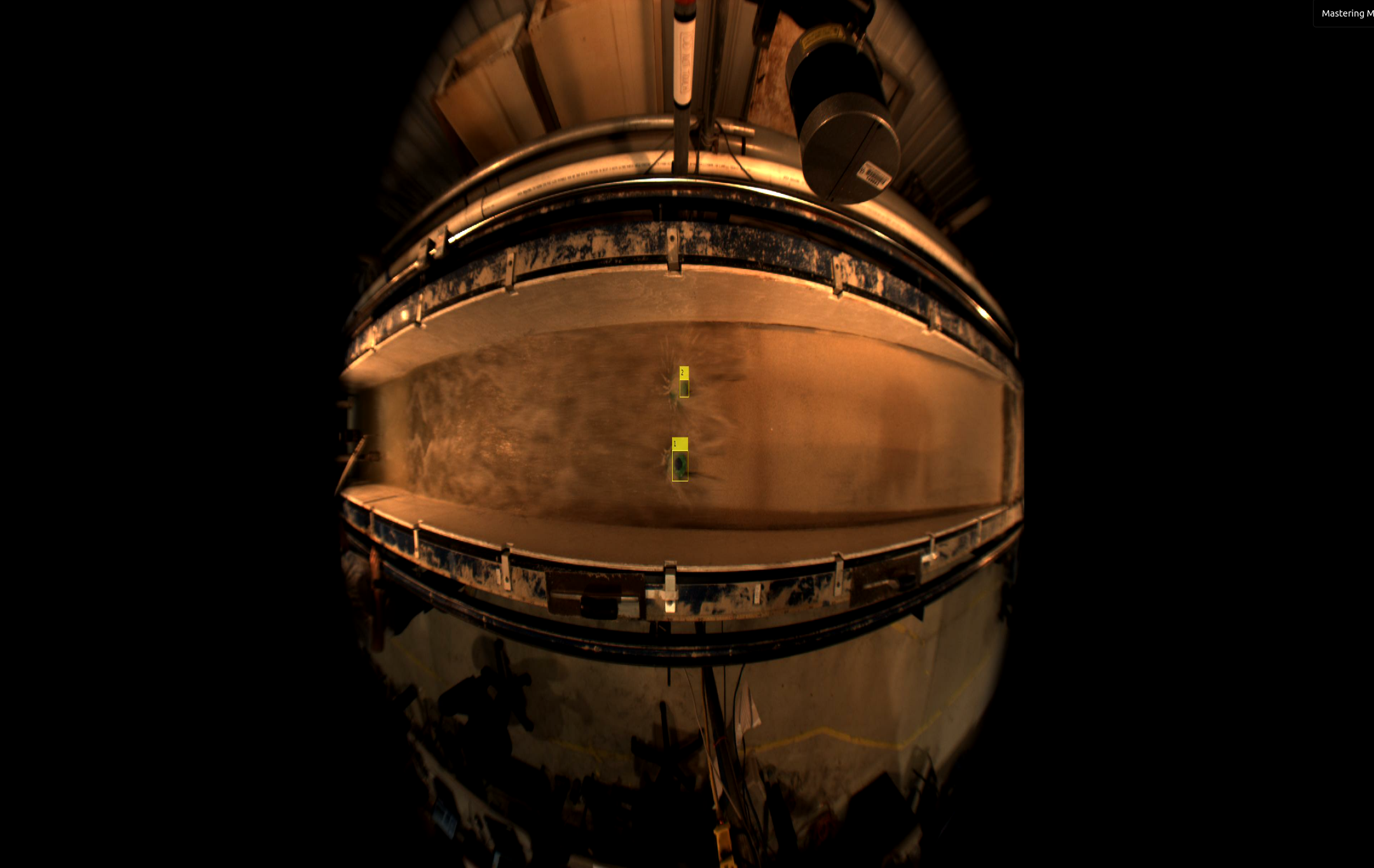2020 Quantification analysis of actin filaments in microscopic images
The actin filament plays a fundamental role in numerous cellular processes such as cell growth, proliferation, migration, division, and locomotion. The actin cytoskeleton is highly dynamical and can polymerize and depolymerize in a very short time under different stimuli. To study the mechanics of actin filament, quantifying the length and number of actin filaments in each time frame of microscopic images is fundamental. Different from microtubules, actin filaments is considered as from intersections/endpoints to intersection/endpoints, namely indiviudal segments of the actin network. In this project, we adopt a Convolutional Neural Network (CNN) to segment actin filaments first, and then we utilize a modified Resnet to detect junctions and endpoints of filaments. With binary segmentation and detected keypoints, we apply a fast marching algorithm to obtain the number and length of each actin filament in microscopic images. We have also collected a dataset of 10 microscopic images of actin filaments to test our method. Our experiments show that our approach outperforms other existing approaches tackling this problem regarding both accuracy and inference time. 


